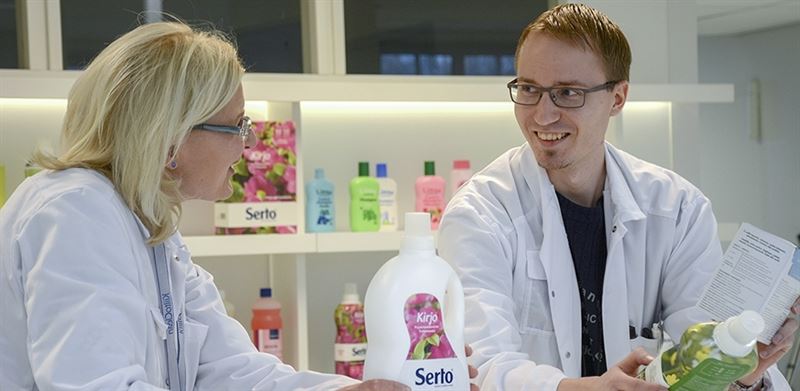Make cleaning cheaper and safer by using the right amount of detergents

Using the proper amount of cleaning product is one way of ensuring the safe use of cleaning products developed for professional use. In addition to improving work safety, using the correct amount of product also has many other benefits. Kiilto product development manager and product safety specialist Tomi Peltonen recommends using just the right amounts of cleaning agents, as this saves time and money, reduces the burden on the environment and, above all, ensures the best cleaning results. Read what Tomi has to say on the subject.
Follow the instructions!
By using the right amount of cleaning agents, we can make a difference to the consumption rate of the most widely used chemicals. A common misconception is that using more cleaning agent than is stated in the product instructions will be faster and more effective and in general give better results. So, is it a good idea to add in a little extra just to be on the safe side?
With diluted products, always start with the smallest amount dissolved in water, and gradually increase the amount if necessary for better cleaning results. However, with general-purpose cleaning agents you shouldn’t use more than the recommended amount. If the maximum amount doesn’t give adequate results, rather than just adding more cleaning agent it’s a good idea to check that the product is suitable for the intended purpose, or if a more powerful product is needed.
To get the full benefit of using the right amount of cleaning agent, you also need to know the temperature and amount of water to use. With hot water, dirt and especially grease are much easier to remove, meaning that less detergent can be used. However, warm water is not always a good thing: with products containing chlorine, for example, cold water must always be used. Knowing the correct water temperature is therefore also part of the safe handling of products.
Too much cleaning agent often gives worse results
Being careless with the amount of cleaning product used almost always leads to poor results. Either too little is used, which results in poor cleaning quality, or too much of the cleaning product was added, which causes various kinds of problems. When an excessively high concentration of cleaning agent is used, the washing solution is likely to foam up too much, which weakens the cleaning action of the active ingredients. Too high a concentration also reduces the mechanical friction effect needed for effective cleaning. Moreover, more rinsing is needed after cleaning. If the cleaned surface is not rinsed properly, the surface will remain sticky. This will cause it to become dirty again more quickly than it should, and the dirt will also cling to it more tightly. The disadvantages of using too much cleaning product are not limited to poor cleaning results. Excess cleaning agents can also damage surface materials, irritate the skin, and increase the chemical load on the environment.
Neither should products be mixed together nor labels switched: ready-to-use dilutions must always be made and kept in the bottles marked for them. For example, mixing an acidic product with a chlorinated product is likely to result in a dangerous reaction. Cleaning products must always be transported and stored in sealed containers to avoid spillage. Spilled products increase the risk of slipping and injury, and over time may also discolour and damage surfaces. Any spillages must be cleaned immediately, as the user themselves or someone else in the area could accidentally get chemicals on their hands or clothing.
By using dosage equipment, you can achieve the desired concentration of the solution every time, and it makes the process easier, safer and more economical. If automatic dosing devices are not available, use a dosing pump or measure to ensure that the right amount of cleaning product is used. Dispenser bottles are used to prepare the required concentration of ready-to-use dilution in advance. When using ready-to-use dilutions in dispenser bottles, it is important to estimate in advance how much dilution will be needed, so that none of it will go to waste after cleaning. To keep dispenser bottles clean, it is advisable to change the dilution at least once a week. This also ensures the most effective solution of water and product. Empty dispenser bottles should be rinsed with warm water and brushed, and left dry overnight. Dispenser bottles should be handled with clean hands so that any detergent residues will not stick to the bottle.
If you still think that the amount of cleaning agent used doesn’t matter, let’s go through it again. Careful measurement of cleaning products has many benefits: it ensures better cleaning results, reduces working time, improves work safety, saves money and is easier on the environment. Using the proper amount of detergent is therefore absolutely essential for ensuring wellbeing through cleanliness.
Kiilto offers many dispensing solutions to help you in your work. For example, Kiilto Box and Kiilto Evo dispensing systems significantly improve work safety, since the closed system ensures that users do not come into contact with the undiluted product during use. Contact your nearest cleanliness and hygiene specialist to learn more!

Tomi Peltonen is a product development manager and product safety expert at Kiilto.
Tags:



